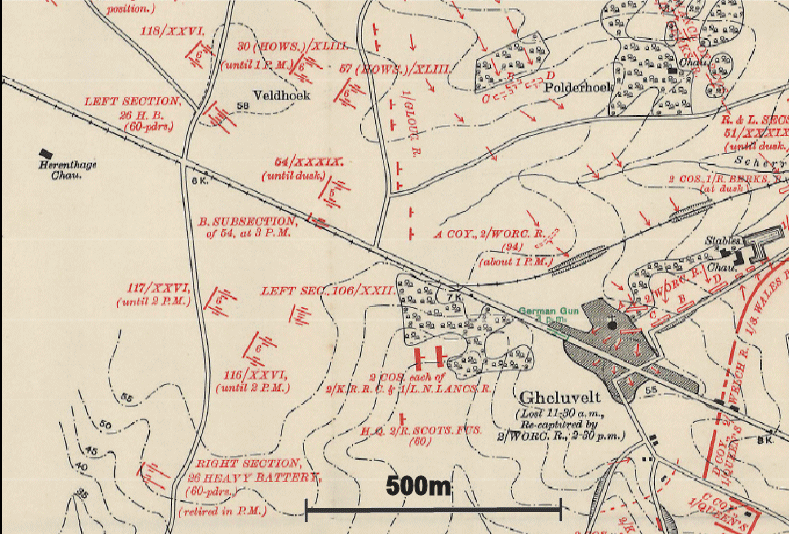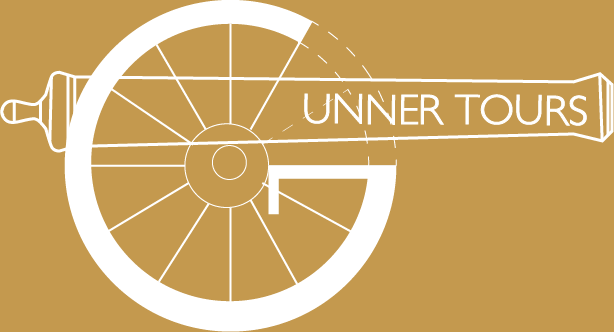
For ten years from 2000 -2010 every soldier who joined the army as an senior entry soldier took part in a Realities of War Tour to Ypres (modern Ieper) in Belgium. A whole generation of soldiers will have heard of the story of “the bayonet charge that saved the British Army.”, made by the 2nd Battalion the Worcester Regiment, Far fewer will be aware of the gunners who supported them.
On the 31st of October the Germans Army nearly won the First World War. They had assembled an overwhelming force of artillery and battered a hole in the British front line East of Ypres at a village called Gheluvelt, on the road between Ypres and Menin, the Menin Road. The only British reserved were the 2nd Battalion the Worcester Regiment, and they mounted a gallant bayonet charge which stopped the Germans and allowed the British line to recover, but at the cost of one third of their number.
But they did not do this alone. They were supported by the Gunners, and in particular by a heroic and skilful action by 54 Dragon Battery, which was one of the batteries which became 129 Dragon Battery, currently part of 4th Field Regiment Royal Artillery.
The map from the Official History of the War in France and Flanders shows a part of the battle of Gheluvelt. It shows German guns at the Western end of Gheluvelt and the position of 54 Battery
According to an infantry officer nearby “Lt Blewitt of 54 Battery came up to say to his battery commander that the Germans appeared to be bringing a gun to the barricade in the middle of Gheluvelt and asked permission to take an 18 pounder onto the road and deal with it. Having got permission, he manhandled the gun onto the road. The German gun fired first and missed. Blewittt did not give them a second chance. He put a stop to any trouble from that quarter for the rest of the afternoon. If the Germans had pushed home their attack during the afternoon there was nothing to stop them.”” Lt Blewitt was awarded the DSO for this action. His letters are in the Imperial War Museum archives. At the time his letters home gave no hint to his family and fiancé of the dangers he ran or his heroic and skillful acts.
Three years later, while a Gunnery instructor on England, he was persuaded to write about the circumstances which led to his award for gallantry. He wrote “My layer at the time was Bombardier Steel, whose efficiency I think solely we all – the detachment and I , owe our lives. The detachment as far as I can remember was: Sergeant, now (1917) BSM Howes, a sturdier man than whom never stepped, as No 1, Bombardier Steel, layer,. Bombardier Priestley, (killed a few days later1), No 6, while think Gunners Hobson and Delamere,(Both at later times my servant, the first wounded by a French battery few days later, and the latter gassed as a sergeant in the battery this year). Made up the crew. Who the last man was I can’t remember, but a damn fine crowd they were, every one of them.”
The German infantry in Gheluvelt. was the 16th Bavarian Reserve Regiment, most famous for one its soldiers, the 19 year old Adolf Hitler. . .
1Gunner (Local Bombardier?) Alfred Priestley, husband of Nancy Priestley of Preston is commemorated on the Menin Gate.
See where this happened and contact Gunner Tours!


My Grandfather, section commander in 106 Battery awarded MC fought there
Richard